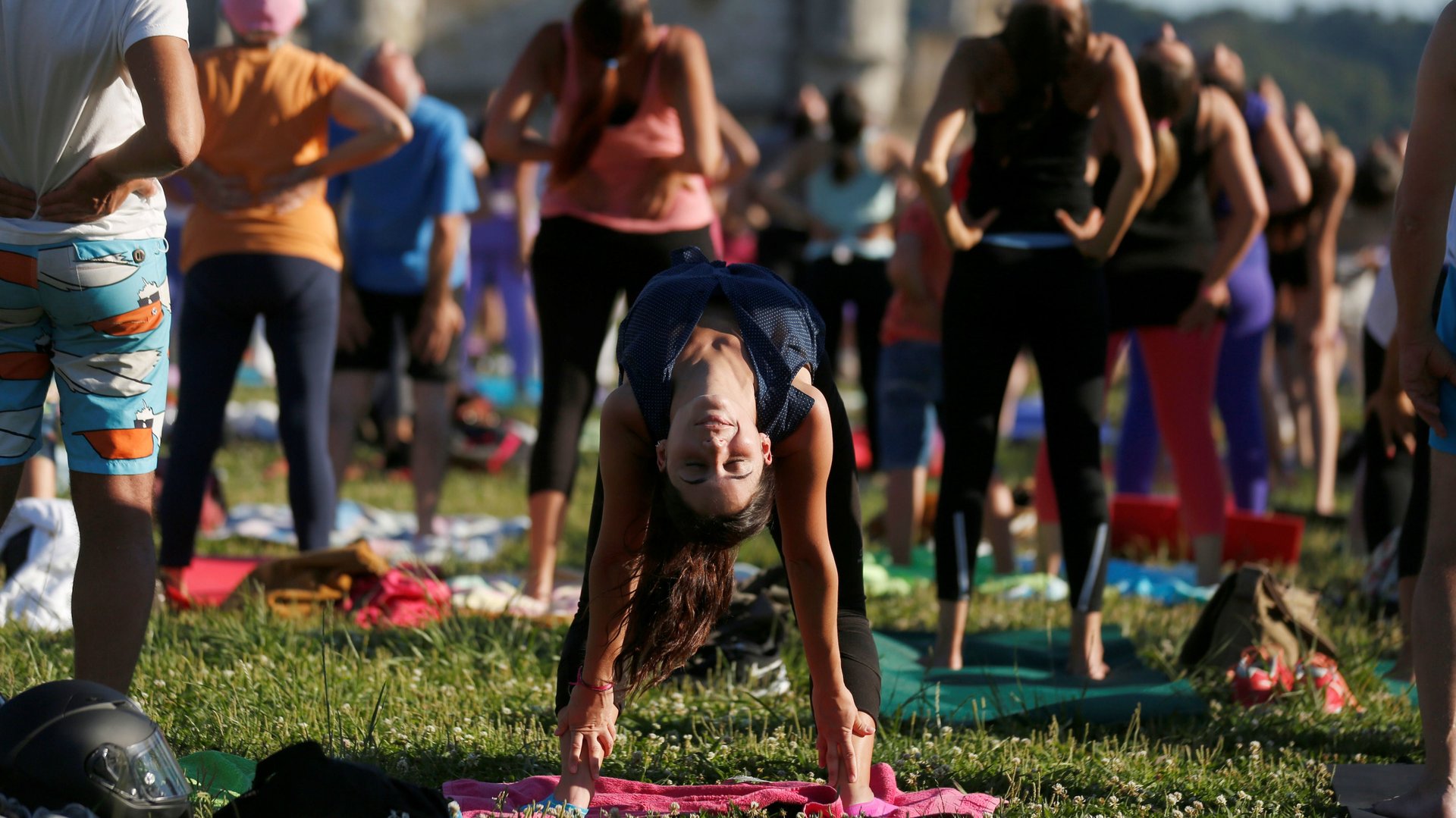We’ll never get definitive scientific proof one way or another about yoga’s health benefits
Yogis swear by their practice for yoga’s mental and physical health benefits—and some science (paywall) has backed it up, too. But despite all the study-based evidence and popularity, scientists will never be able to declare yoga’s superiority to other health interventions.


Yogis swear by their practice for yoga’s mental and physical health benefits—and some science (paywall) has backed it up, too. But despite all the study-based evidence and popularity, scientists will never be able to declare yoga’s superiority to other health interventions.
Why? Because for participants testing yoga compared to other treatments, it’s pretty obvious that they’re doing yoga—you can’t not know you’ve struck a warrior pose.
On Jan. 12, the Cochrane Library of Reviews released a report (paywall) assessing yoga’s efficacy for treating lower back pain. These reviews are often considered the gold-standard of evidence because they assess the entire body of work on a given outcome. In this case, a team of scientists from the US, England, India, and Germany went through all the scientific literature they could find—12 studies with just over 1,000 participants total—comparing yoga to other stretching exercises or no intervention at all. They found that overall, most people reported feeling like their low back pain was better three months to a year after doing yoga. (The authors note that although there’s some risk of increased back injury from overstraining, these risks are the same as any other back stretching exercise. )
Except they still rated the quality of evidence as “low to moderate,” meaning they’re not totally confident in their conclusions. Some of this was because of variation among study designs and small sample sizes. But the authors also noted that “none of the included studies blinded participants or providers to treatment assignment.”
Ideally in a clinical trial testing the efficacy of health interventions—whether it’s a pill or exercise regime—neither subjects nor researchers themselves know who is receiving the treatment compared to a placebo. This is called a double-blind study, and it accounts for the placebo effect, a poorly understood phenomenon in which patients get better simply because they expect they will since they’re getting some sort of treatment. (There’s also the nocebo effect, which is when, because they expect they will, patients feel negative side effects of a medication or treatment even when they’ve received a sugar pill.)
This is why it’s much easier to study the efficacy of medication compared to interventions like yoga or exercise. Sugar pills can be made to look indistinguishable from actual medication. Yoga is pretty obvious to study participants and researchers alike. Similarly, in a recent study examining the effects of psilocybin, the active compound in psychedelic mushrooms, compared to a vitamin placebo, patients knew pretty quickly if they had been given the actual drug or not because the effects would be so apparent. It’s one of the challenges of pulling together scientific proof of medicinal value of psychedelics.
In the case of yoga and lower back pain, it’s likely that practicing does help to some degree, the Cochrane review says—but it’s almost impossible to test a truly unbiased comparison.